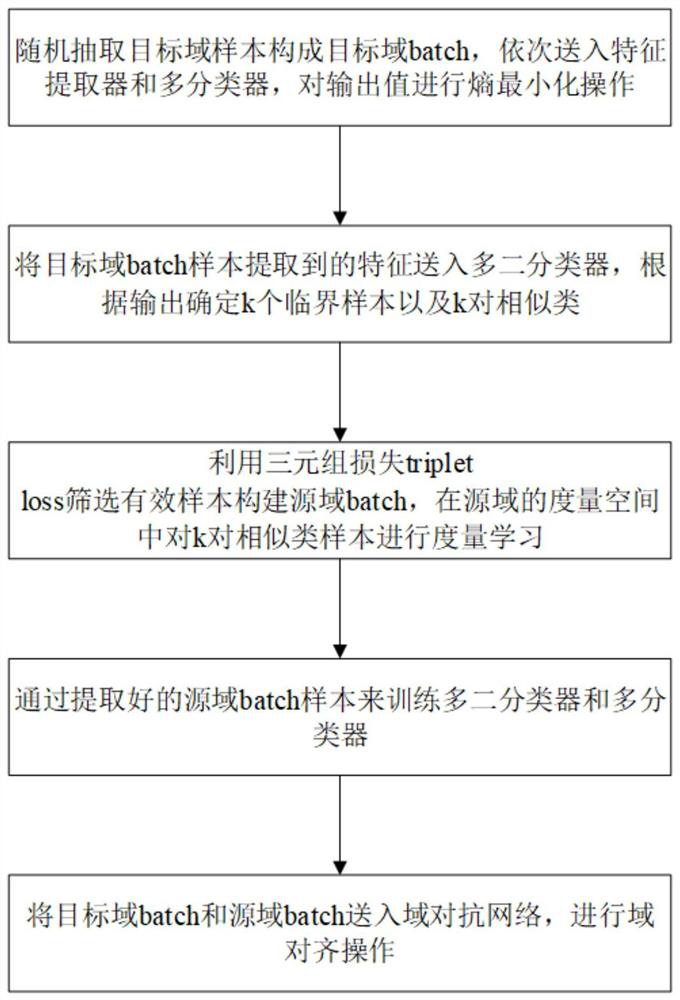Domain self-adaption method based on triple and difference measurement
A domain adaptation and triplet technology, applied in the field of machine learning, can solve problems such as the proximity of similar samples in the target domain, the lack of public disclosure of similar samples in the target domain, and the misjudgment of samples in the target domain.
- Summary
- Abstract
- Description
- Claims
- Application Information
AI Technical Summary
Problems solved by technology
Method used
Image
Examples
Embodiment Construction
[0050] The present invention will be further described below in conjunction with the accompanying drawings.
[0051] Such as figure 1 A domain adaptation method based on triplets and difference metrics is shown, including the following steps:
[0052] Step S1, randomly extract samples from the target domain to form a target domain batch, input the target domain batch into the feature extractor to obtain sample features; input the sample features to the multi-classifier, and perform entropy minimization processing; at the same time, input the sample features to at most two The classifier determines k critical samples and corresponding k pairs of similar classes based on the output of the multi-binary classifier, and calculates the margin difference between the corresponding k positive and negative sample pairs.
[0053] Send the target domain batch to the feature extractor F to extract features and then send it to the multi-classifier C m For entropy minimization, the loss fu...
PUM
 Login to View More
Login to View More Abstract
Description
Claims
Application Information
 Login to View More
Login to View More - R&D
- Intellectual Property
- Life Sciences
- Materials
- Tech Scout
- Unparalleled Data Quality
- Higher Quality Content
- 60% Fewer Hallucinations
Browse by: Latest US Patents, China's latest patents, Technical Efficacy Thesaurus, Application Domain, Technology Topic, Popular Technical Reports.
© 2025 PatSnap. All rights reserved.Legal|Privacy policy|Modern Slavery Act Transparency Statement|Sitemap|About US| Contact US: help@patsnap.com



